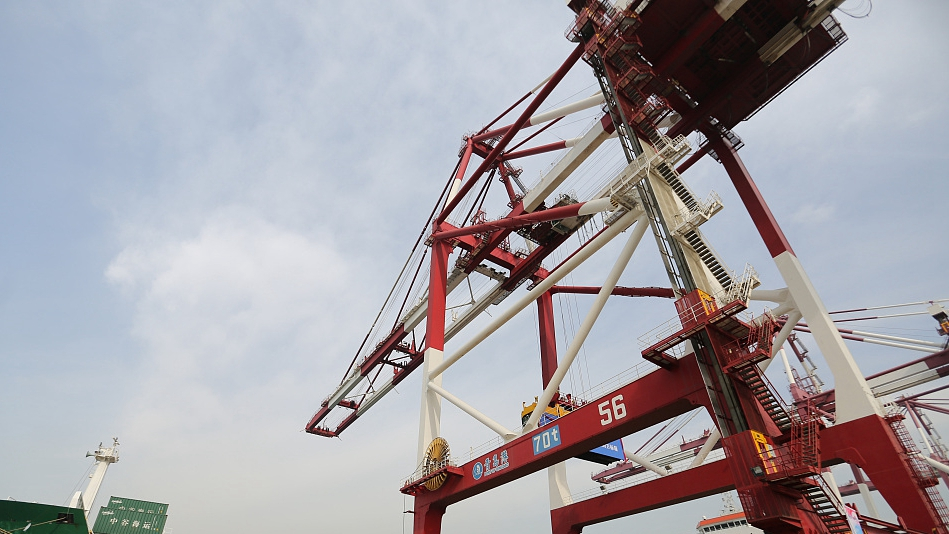
The world's first hydrogen-powered 5G port in east China's Qingdao city became operational on Thursday morning, with the new high-tech equipment allowing unmanned vehicles to transport containers in a more efficient and environmentally-friendly manner.
The green smart port at Qingdao New Qianwan Automatic Container Terminal in east China's Shandong Province not only handles the loading and unloading of containers by intelligent systems, but also uses nearly 100 automated equipment including unmanned guided vehicles and high-speed rail cranes powered by hydrogen fuel.
These advancements will help the entire terminal to achieve its goal of zero emission while still operating to its full potential.
"At our port, the bridge crane and rail crane transmit control and video signals remotely by 5G, enabling the unmanned driving of all equipment and fully meets the demand of our production needs," said Li Yongcui, a general manager at the terminal.
The fully-automated port has greatly sped up the traditional terminal operating modes. It allows new-generation crane drivers to control six sets of lifting equipment at a control center located 100 meters away, while also fully completing the loading and unloading process within 90 seconds.
Compared to more traditional ports, the new innovations in Qingdao have increased operating efficiency by 30 percent and reduced labor demands by 70 percent, making its automation and overall efficiency far superior to other world-class ports.
"We used a large amount of diesel power before, and later switched to electricity. Now we use this hydrogen power, a new type of power that is completely green and environmentally-friendly without carbon emissions. The port has been transforming and upgrading green environmental protection measures and exploring technological [methods]," said Zhang Liangang, another manager at the terminal.
According to estimates, the entire port is expected to reduce carbon dioxide emissions by about 28,000 tons and cut sulfur dioxide emissions by about 300 tons each year.
(Source: CCTV+)